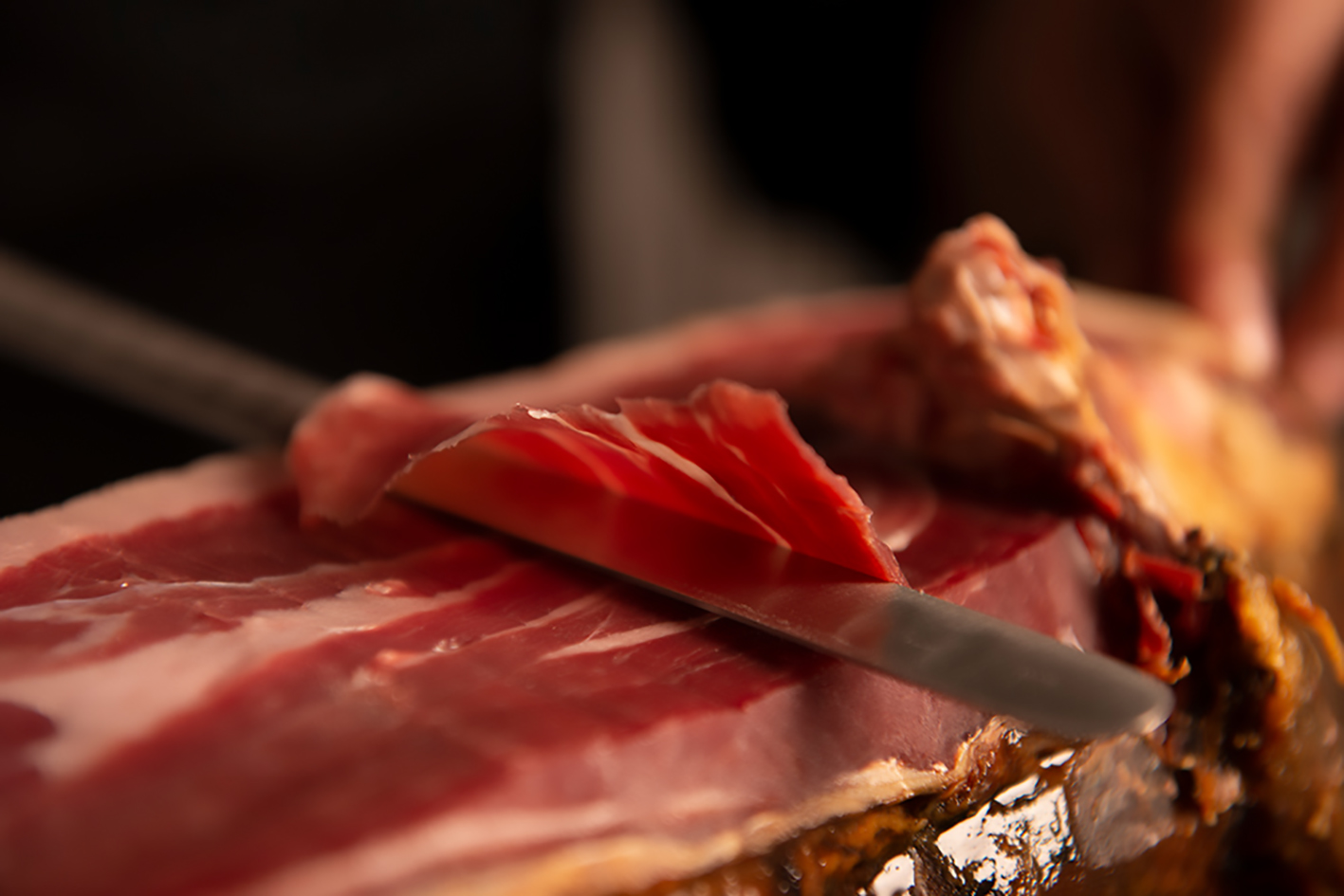Curious Questions: Why are banana skins so slippery?
The deadly slipperiness of the discarded banana skin — substantially more slippery than ice — is a staple of comic sketches across the world, but what is it that makes our favourite tropical fruit such a hazard? Martin Fone investigates.


Astonishingly, here in the United Kingdom, we consume around 5 billion bananas a year. It is a cheap, nutritious and abundant fruit, first becoming available to buy commercially in 1888, thanks to a grocer named Edward Fyffe.
Equally astonishingly, although there are more than a thousand varieties of banana, it is almost certain that wherever you buy one in the western world, it is likely to be a Cavendish. Joseph Paxton — he of the Great Exhibition’s Crystal Palace — was the first to propagate this strain of banana, in 1834 in the glass houses at Chatsworth for the 6th Duke of Devonshire, William Cavendish, after whom it is named.
This type of banana is sterile and can only be reproduced by creating clones of itself. This means that there will be uniformity in the way the plant grows, when and how the fruit will develop, and how it will appear after it has been transported in a refrigerated container. So predictable is it that producers can maximise the profit potential of each plant whilst satisfying consumer demand for cheap bananas.
The Cavendish took over the mantle of the world’s top banana from the Gros Michel in the 1950s when the latter was wiped out by a fungal disease, known as Panama Disease, which attacked its root system. Its dominance, though, is being threatened by its own susceptibility to a fungal disease, snappily called TR4, a form of fusarium wilt, and the race is on to find a new cultivar. In 2018 a team of Dutch scientists announced the development of a genetically modified Cavendish which — to date, at least — has proven to be immune to TR4. The future of our cheap bananas may be safe.
Our American cousins took up the consumption of the fruit somewhat earlier than we did, when Carl B Frank started to import them to New York City from Panama in the middle of the 19th century.
They soon became a popular and convenient form of street food but what to do with the skins? Lamentably, the answer seemed to be to throw them into the street.
In the 1880s the magazine, Harper’s Weekly, felt it necessary to remind its readers that discarding a banana skin on a pavement was likely to cause someone to break a limb. The authorities in St Louis went one step further in 1909, outlawing the “throwing or casting” of a banana rind on a public thoroughfare.
Exquisite houses, the beauty of Nature, and how to get the most from your life, straight to your inbox.
The streets of New York in the late 19th century were ankle-deep in rubbish and rotting fruit skins caused a particular problem to the unwary pedestrian. Although pigs roamed the thoroughfares, they could not control the problem and the newspapers ran, from time to time, stories about the latest mishaps. In 1884, the New York Times reported that 'a wealthy merchant, aged 75... slipped on a banana peel in front of his home and broke his right leg near the hip…he is not expected to recover.'

Something had to be done. It took a combination of the then head of New York City’s police, Theodore Roosevelt, waging war on the banana skin peril, 'dwelling particularly on its tendency to toss people up in the air and bring them down with terrific force on the hard pavement' and the appointment of George Waring as head of the city’s sanitation department in 1895 to bring some order to the streets. Waring’s team of street cleaners, dressed in white uniforms, set about their task with vim and gusto. Within a year they had achieved their goal and the grateful citizens held a parade in their honour.
The yellow peril of the discarded banana peel, though, lingered well into the 20th century, leaving time for the doyenne of the New York banana slip, Anna H Sturla, to make her mark. Over a period of four years until 1907 she had claimed $2,950 in compensation from 17 falls, eleven of which involved banana skins. By the time the New York Times had caught up with her, she was standing (but not slipping) trial for making fraudulent complaints.
Undoubtedly, the sight of someone falling head-over-heels appeals to our baser sense of humour and it is no surprise that it has become a staple in the repertoire of those comedians who perform slapstick. The first slipping-and-falling gag performed on stage is attributed to the Vaudeville star, 'Sliding' Bill Watson, influenced, inevitably, by what he had seen on the streets. His sliding act brought him fame in the first decade of the 20th century.
In 1917 Harold Lloyd brought the banana slip joke to the movies in his latest film, The Flirt. Four years later Buster Keaton, in The High Sign, took the joke a stage further. The camera shows Keaton coming perilously close to a banana peel but, contrary to the audience’s expectation, he does not slip on it. Celebrating his escape, Keaton then slips on a second skin which he had failed to spot. There is only so much you can do with a simple concept.
Inevitably, some scientists have sought to determine what makes the banana skin so slippery and whether it is the slipperiest fruit around. The way to measure slipperiness, I’m told, is to place a piece of a given material (the object) on to a ramp of another material, slowly increasing the angle of the ramp. When the object first starts to slide, take a note of the angle of the ramp. From this you can calculate the coefficient of friction (CoF). A CoF in excess of 1 means that the angle is greater than 45 degrees before the object slips. Rubber on cement has a coefficient of 1.04, for example. The nearer the CoF gets to zero, the slippier the object. Walking on wood in socks has a CoF of 0.23 while stepping on to ice registers at 0.15.
A team of Japanese scientists, led by Dr Kiyoshi Mabuchi from Kitasato University, set out to measure the CoF of a banana. They peeled some, threw the skins on to a wooden floor New York-style, and proceeded to tread on them with rubber shoes. They recorded a CoF of 0.07 which, to put it into context, means that a banana skin is more than twice as slippy as ice. Repeating the experiment with the peel of apples and tangerines, they found their CoFs were 0.1 and 0.225 respectively. Bananas were the slipperiest of them all by a long chalk.
The skin of a banana, when under pressure, for example when you step on it in your size nines, releases a gel. It is this gel, more dangerous than ice, which can cause you to lose your balance and fall. The moral of the story is to be careful where you put your feet.

Credit: Getty
Curious Questions: How did Abraham Lincoln come to be the only US president to hold a patent?
Statesman, lawyer, fearless leader – and part-time inventor. Martin Fone looks at one of Abraham Lincoln's lesser-known talents.

Curious Questions: Why do Australians call the British 'Poms'?
With England about to take on Australia in The Ashes, Martin Fone ponders the derivation of the Aussies nickname for

Curious Questions: How likely are you to be killed by a falling coconut?
Our resident curious questioner Martin Fone poses (and answers) another head scratcher - or should we say, head banger?

Credit: Jamon Iberico
Curious Questions: Do delicious hams from little acorns grow?
Jamón Iberico is undeniably delicious – and undeniably pricey. Martin Fone took a trip to Spain to find out how it
After graduating in Classics from Trinity College Cambridge and a 38 year career in the financial services sector in the City of London, Martin Fone started blogging and writing on a freelance basis as he slipped into retirement. He has developed a fearless passion for investigating the quirks and oddities of life and discovering the answers to questions most of us never even think to ask. A voracious reader, a keen but distinctly amateur gardener, and a gin enthusiast, Martin lives with his wife in Surrey. He has written five books, the latest of which is More Curious Questions.

